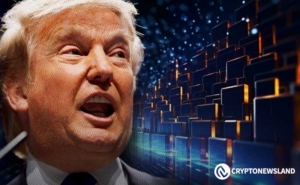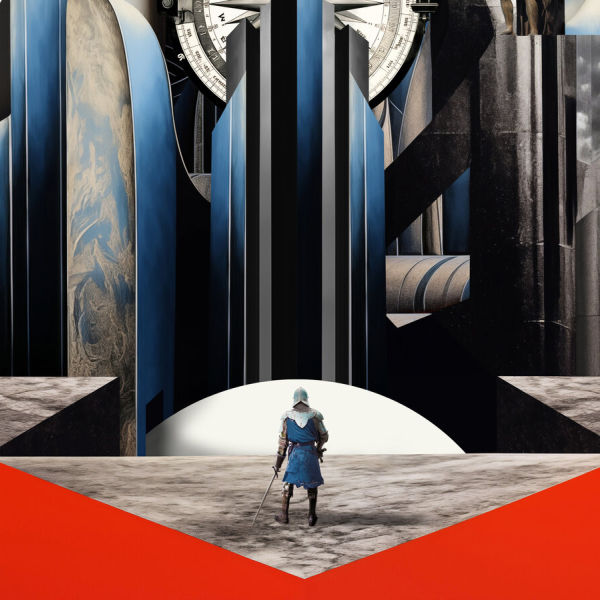Analysis: OCC’s Hsu is proud of saving TradFi from crypto crash
From Ledger Insights by Ledger Insights

During a recent IntraFi podcast , acting Comptroller of the Currency Michael Hsu was asked about the achievements he was most proud of during his tenure at the OCC. He mentioned only two examples, including the fact that the 2022 crypto downturn did not affect the banking system.
“You have two trillions of dollars wiped out over the course of 2022 and the banking system (has) no problem. Why?,” he asked. “If you think back to 2008 with derivatives, you had a couple SIVs (structured investment vehicles) that blew up, and the whole banking system is suddenly in trouble, because it’s super interconnected.”
“And this time, we just made sure to tell banks, look, you can do crypto, but it’s got to be safe, sound and fair, and you have to demonstrate it to us. So a lot of banks that were kind of crypto curious: Yeah, not worth the trouble. It’s too hard to figure out. And that limited contagion from one to the other.”
Many in the crypto ecosystem have a different perspective. They say the Biden administration’s so-called “Operation Chokepoint 2” aimed to de-bank crypto firms and crush innovation. A recent freedom of information request to the FDIC seems to show several banks were slowed down from offering crypto to clients. In most cases they wanted to do so via third party providers, so the biggest impact could have been on their reputation rather than deposits. However, the FDIC letters did not show a pattern of de-banking.
Mr Hsu continued, “I think that served the American people well, because folks who have nothing to do with crypto, they don’t want their deposits, they don’t want their payments and their lives interrupted by folks who are doing a lot of speculation. They may have no problem with that, but they don’t want that impacting their lives. So I think taking that approach has served the American people well.”
Crypto: speculation versus utility
He also gave some other perspectives on crypto. Whether or not one shares Mr Hsu’s political or other views, he’s an extremely thoughtful and practical regulator. Hence, he’s worth listening to.
Mr Hsu sees crypto in two ways. One is the speculative aspect which he thinks is okay provided the rules are followed (although some would ask: which rules?). The Comptroller considers it similar to sports betting and gambling. However, he identifies a second aspect of crypto which is “innovative, interesting, quite different than what we have now. And may have some promise for solving some really thorny, knotty problems.”
During the podcast on a variety of topics he repeatedly asked: “where’s the problem you’re trying to solve”. In this case, the main ones he mentioned are the frictions and risks in securities settlement and cross border payments. Hence, he views the application of crypto tech for wholesale and institutions as where it’s ‘interesting’.
But he is adamantly against blending the speculative with the ‘interesting’ bits. “The irony to me is that a lot of the crypto advocates, they’re not technology agnostic. They’re absolutely technology specific, like you have to use THIS technology. Well, why? What’s the problem we’re trying to solve?,” Mr Hsu asked.
Hence, he proposes the need for separation between the advocates for one specific crypto and the application of innovation. On more than one occasion, we’ve wondered about whether executives at particular firms are holders of specific cryptos attached to the blockchain their company adopted. One person’s ‘skin in the game’ is someone else’s conflict of interest. But addressing that requires the enforcement of ethical guidelines rather than dismissing permissionless blockchains.
Can you separate the crypto utility from the speculative?
That separation may be hard to achieve in practice. As the primary media site dedicated to enterprise and institutional tokenization, we’ve had a front row view of the number of failed consortia using enterprise blockchains. Consortia are closed. Open is often better.
On a related note, why are institutions leaning towards Ethereum technology? It’s inherently weak on privacy compared to enterprise solutions. It comes back to Mr Hsu’s question: what problem does Ethereum solve? Enterprises see it as a path to permissionless blockchains with the hoped for North Star of a global pool of retail, and possibly institutional investors in future years. It addresses the biggest problem of all for business: sales.
And if the objective is one or more permissionless blockchains, then crypto is the token that underpins the chain.
So the need for openness rather than wrangling consortia and the growing global pool of crypto investors are key draws.
A stablecoin fan or not?
When asked about the potential for one of the Big Tech firms to adopt stablecoins and cause banking disintermediation, Mr Hsu brushed past the Big Tech part. His practical view is if a system is better for consumers and safe, sound and fair, then it should be adopted, and the banking system will adapt. While that sounded like an endorsement, his previous and subsequent comments emphasized the opposite.
His preceding comment was that “A lot of these stablecoins are the go-to for bad guys. And there’s a reason for that, and I think we have to be careful about that.”
In response to the disruption question, he said, “When you dig in and you open the hood and you look inside, you’re like, actually, this is not faster. Why is copying every transaction on the thousands of nodes faster than just having a centralized ledger? It just doesn’t make any sense. What is better about this? What problem does it solve?”
First we’ll tackle the stablecoin ‘problem’ and then the blockchain issue.
Stablecoin pros and cons
There are numerous societal pros and cons to stablecoins, which are beyond the scope of this article. Perhaps the biggest advantage over bank payments is the fact they do not require interbank settlement. That makes them faster and lower risk (if appropriately backed and governed). All conventional payments involve a two step process at a minimum: the banks move money for their clients and then settle up between themselves. Because stablecoins use reserves, they don’t require that second step, which removes tremendous frictions. A wholesale CBDC could help with the interbank settlement, but it is still a second step.
Addressing the ‘bad guy’ argument may appear to be valid, but almost always comes with the baggage of infringing civil liberties. In the case of stablecoins, that means either restricting their use or knee-capping self hosted wallets. There’s some irony here. One of the attractions of self hosted wallets for mainstream users is the hassle of false positives users have experienced with banking AML, despite being law abiding citizens.
On the flip side, the biggest disadvantage of stablecoins is rarely discussed. While stablecoins are currently proliferating, when the dust settles there are likely to be far fewer stablecoins than there are banks, because of payment network effects. In other words, the centralizing nature of blockchain will create oligopolies which are great for the stablecoin issuers but in the long run are often bad for competition and consumers.
Does tokenization need a blockchain?
On several occasions we’ve highlighted Mr Hsu’s position that tokenization could be centralized rather than use blockchain or DLT. His comments during the podcast reinforce this.
It is possible to implement tokenization on a centralized ledger. But let’s ask Mr Hsu’s question about which problems are we trying to solve? Today, every institution has their own infrastructure which has to be reconciled with every other institution, creating tremendous inefficiencies. A shared ledger such as a DLT or a centralized ledger solves the reconciliation issue.
Much like the stablecoin, security tokens and other tokens can transfer more seamlessly in a single step with the added advantage of programmability built into the token.
But why do institutions have their own infrastructure today? The answer is control, which includes protecting trade secrets. Yes, one can encrypt data on a centralized ledger, but without physical control there will always be fears of exposing data. With quantum computing on the horizon, that’s a real risk. On a centralized ledger that fear drives less and less to be shared, undermining the utility.
This issue also applies to some DLT architectures, especially those that replicate all data (versus those that do not). Users will tend to keep less data on chain, or a suboptimal amount.
Hence, we’d argue that tokenization may or may not need DLT, but it needs a shared infrastructure to reap its benefits and requires decentralization to give institutions control. DLT happens to tick both of those boxes. A handful of other technologies can also be considered, although some suffer from similar challenges to the centralized ledger. Our view is that centralized ledgers are not the answer.
Image Copyright: OCC
Disclaimer: The content of this article solely reflects the author's opinion and does not represent the platform in any capacity. This article is not intended to serve as a reference for making investment decisions.
You may also like
Donald Trump’s Memecoin to Face $320 Million Token Unlock as Price Dips

33% of French looking to buy crypto in 2025 but Italians are even more bullish
Share link:In this post: A third of French people intend to purchase cryptocurrencies this year. New study shows Italians as most bullish among surveyed nations in Europe. The crypto sector’s growing legitimacy helps attract more investors, researchers say.
Spanish Police End Crypto Scam Ring That Used AI to Swipe $21 Million From Investors

Survey reveals 1 in 5 Americans own crypto, with 76% reporting personal benefits

